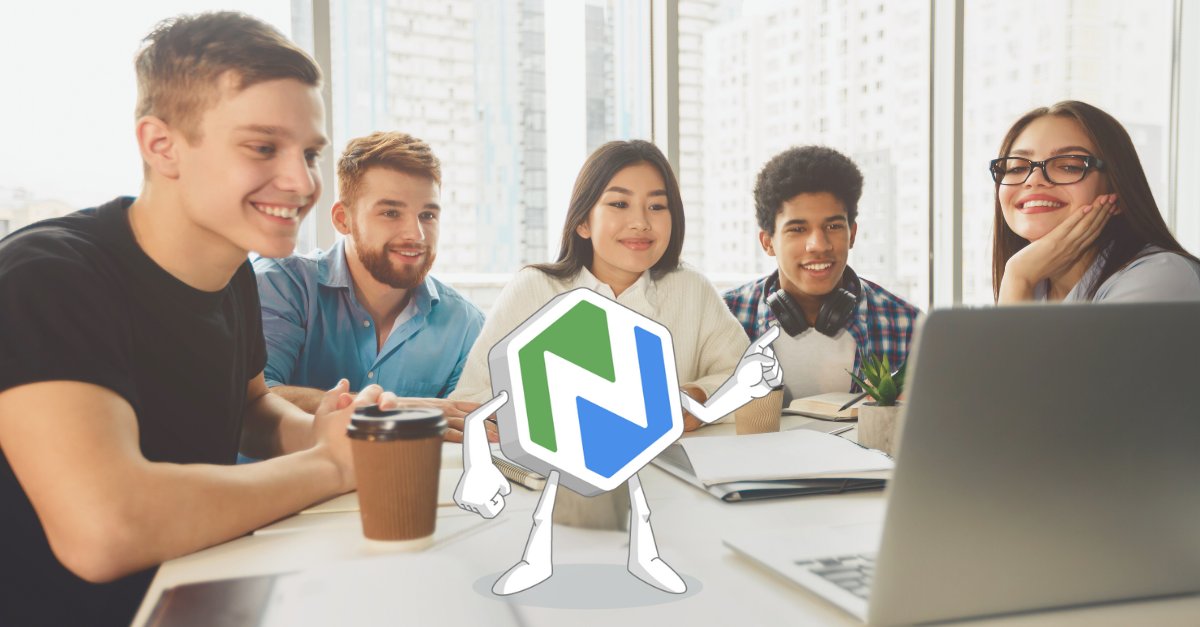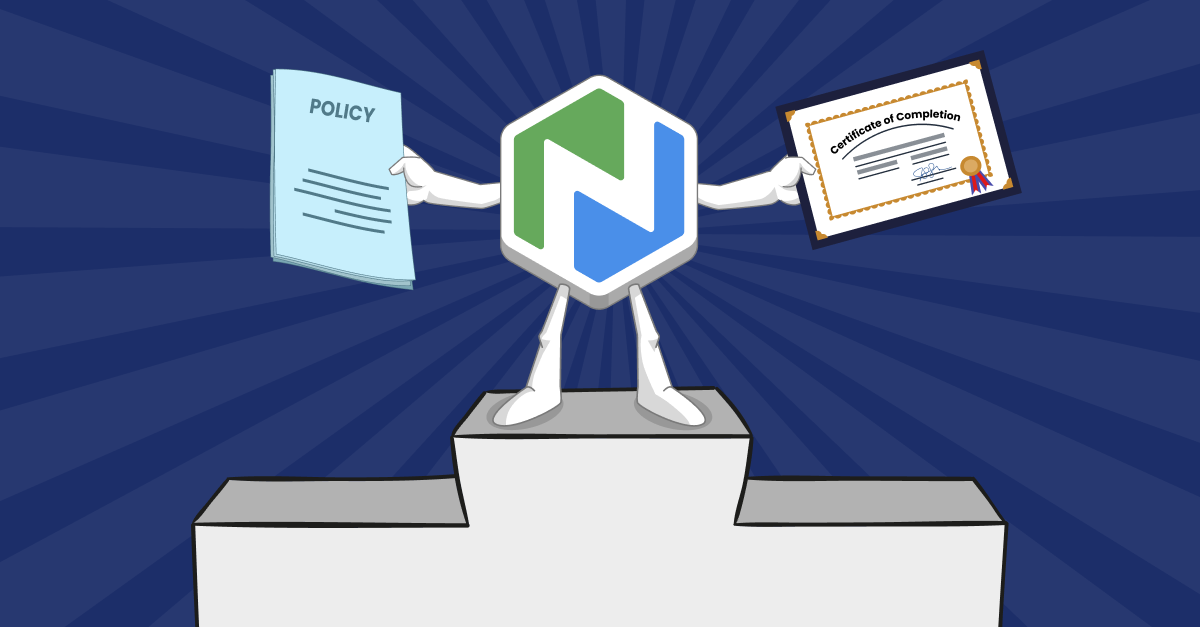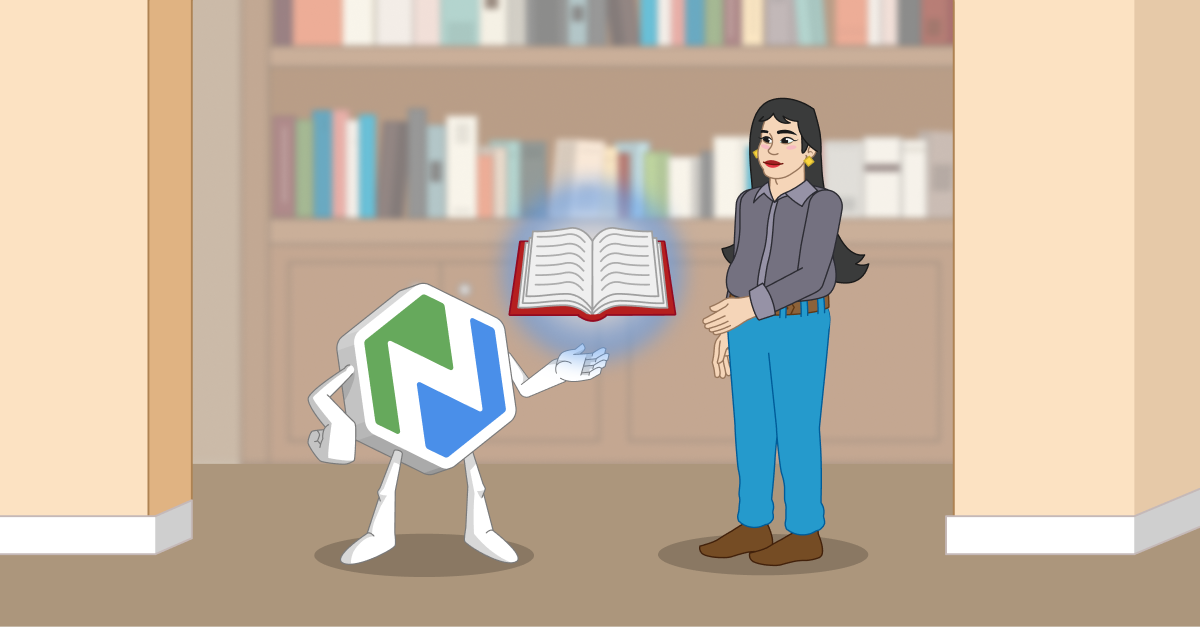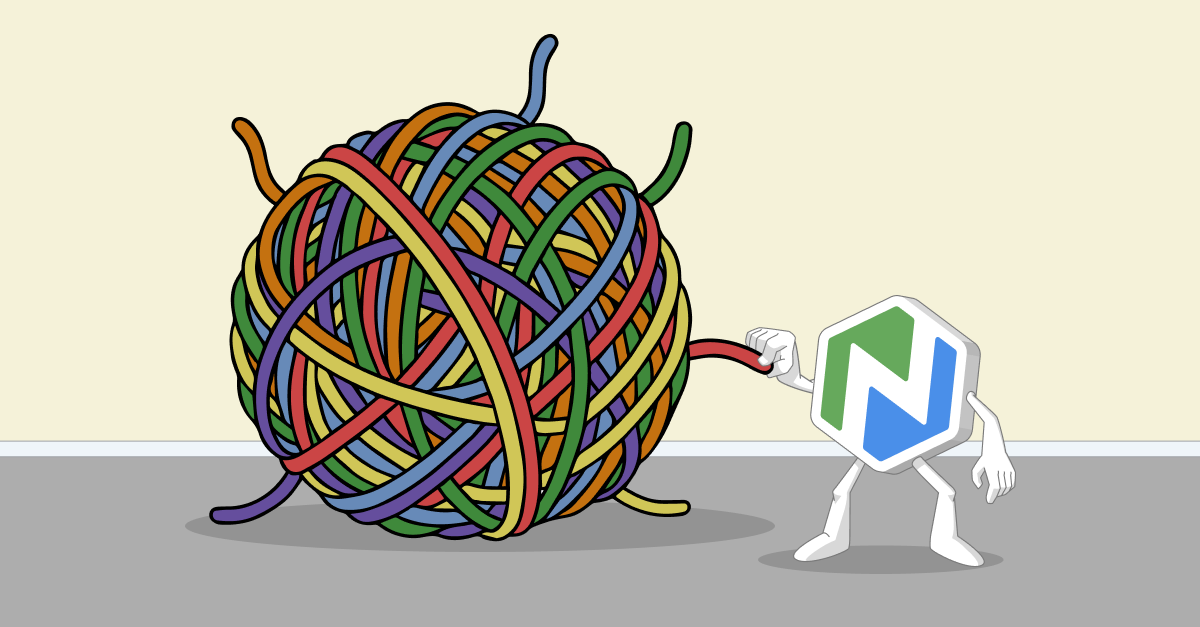7 Ways to Build Better Student Employee Training
Learn how creative, consistent, and compelling training can elevate your student workforce—and the library.

If your library has student employees, you’re probably familiar with the revolving door of hiring, training, and turnover. Shifting schedules, extracurricular activities, and general life mean your library may have a new crop of students each semester. New employees need training. Training takes time. And student employees are there because staff generally don’t have time.
But there are ways to make training more effective—and engaging—for staff and students. Good training programs help students:
- Learn tasks
- Take ownership of their work
- Contribute to larger library goals
- Build skills that will serve them in their future careers
And good training programs don’t have to be complicated or expensive.
In her 2020 chapter on library student employees, Elizabeth L. Black writes that “students often seek employment in the library initially as an employer of convenience, but academic libraries, as members of the higher education community, can do so much more than provide an easy job and a paycheck” (p. 66).
Good training is one way to do more with—and for—student employees. If your training feels dull, repetitive, or ineffective, read on. We’ll share tips on how creative, consistent, and compelling training can elevate your student workforce—and the library.
Move Training into the 21st Century
Is your library still offering one or two in-person training sessions at the start of each semester? Many are. And while it’s a good way to introduce students to supervisors and each other, it’s not necessarily the most effective—or compelling—way to train.
Moving training online has multiple benefits. It:
- Eliminates scheduling problems. Online training is always available to students, so you don’t need to get them in one room for an information dump they will likely forget after eating pizza and going home.
- Provides point-of-need resources for students. Even if students remember what you taught them, they’ll have questions when they’re at the desk or on the floor. Online training, available when they need it, can give them answers—and confidence—in the middle of a task or project.
- Keeps training consistent. Have you forgotten what you said to which students? Are you struggling to remember if you covered everything? Online training ensures everyone gets the same message, freeing up your mental space and preventing things from falling through the cracks.
- Frees up your time. Julia McKenna (2020) points out that “online training can be highly effective in minimizing the amount of staff time needed to train student workers” (p. 78). If you create quality training, you can spend more time answering questions and building student skills instead of covering the basics.
Online training doesn’t have to be complicated or flashy. In fact, keeping it clean, simple, and usable is key. Create online guides or embed training in your LMS to quickly, efficiently, and consistently get students what they need.
Prepare Students for Future Work
McKenna puts it simply, “Working in the library is a great way to prepare students to enter the workforce” (p. 75). From technical know-how to customer service, and from time management to cultural competency, library student employees gain key skills for future jobs.
In addition to training students on library tasks, like how to shelve books, think about expanding training to cover soft skills like:
- Critical thinking
- Working with others
- Communicating effectively
Skills like this may seem beyond the scope of some library jobs, but it’s ultimately good for the library. “By allowing students to build their experience as a student employee in a way that will translate over to their career, it can help to increase their dedication to the job and build goodwill for the library” (McKenna, p. 80).
Linking library jobs to competitive advantages for later work won’t come naturally to students, though. Black cites research from Rutgers showing that “while the students liked their jobs and thought the library was a great place to work, they didn’t see benefits of that employment that would transfer to their future careers” (p. 61).
So make it explicit. Add soft skills and other in-demand skills to your student training, and consider holding workshops or mentoring sessions to show students how to leverage their library jobs on future resumes.
Make Downtime Training-Time
So, when do you add extra training?
When I was a student employee, downtime was discouraged. If desk traffic was slow, I’d shelve books. If the books were shelved, I’d dust shelves. If the shelves were dusted, I’d make sure all the books were neatly aligned. It wasn’t bad, but it wasn’t exactly fulfilling, either.
There seems to be more flexibility in student downtime now. Students can study or work on their own projects if public service desks are quiet. But there may be better ways to use this time to benefit students and the library.
Everett and Bischoff (2021) point out that “with creative use of downtime and existing budgets, much can be accomplished when librarians are actively seeking…ways to leverage student jobs into workplace learning opportunities” (p. 418).
Online training—especially if it’s bite-sized—is a great way to fill downtime. Build an online library of training tutorials and ask students to use part of quiet time to go through them. In Niche Academy’s content library, you’ll find topics like:
- Cultural competency
- Professional ethics
- Library anxiety
- Professional communication
- And more
Each introduces a topic and gives students core skills they can immediately implement on the job.
And if there is no downtime? Keeping training short allows you to build it into student schedules consistently. Once a week, assign a short training module on a topic students are interested in, then let them practice on the job. Students will build skills, and you’ll create a culture of learning, an approach that “helps library employment become more than just a good campus job, but also a stimulating experiential learning environment” (Everett and Bischoff, p. 403).
Let Students Lead
One way to tie career-building skills and library tasks together is to let students have a role in developing training.
McKenna points out that “the biggest challenge to implementing online training is undoubtedly developing and compiling the content” (p. 79). Her work shows that “allowing students to take ownership also served as a way to increase student employee investment in their role” (p. 80).
A great way to lessen the burden of creating training is to have students help build it. Encourage seasoned student employees to review and help revise training material. Ask them what works in theory but falls apart in practice. Find out what challenges they face that no one prepared them for.
Then, show them how to build training for their peers. This takes some time upfront, but using a simple platform like Niche Academy makes developing training easy.
McKenna notes that “allowing students to take on projects relating to their major and career aspirations can help build their resume and help them gain future employment” (p. 80). Traditionally, this might have looked like having students help with displays, exhibits, or technology. But this mindset can easily be applied to reviewing and revising training for students studying writing, editing, communications, or teaching.
And don’t stop at basic training tasks like clocking in or calling out sick. Clark, Gabriel, and Borysewicz (2020) write that their students “are very active in creating and updating research guides and other resources used for information literacy instruction, as well as developing training tutorials for future [students] and aiding in basic reference training for the Access Services student employees” (p. 12).
Collaborating with students to create training for their peers connects them to each other. Everett and Bischoff note, “the library benefits from having a more engaged student workforce and by maximizing their contributions to projects through their unique skills and perspectives. The students benefit by developing their knowledge and technical skills, teamwork, and relationships” (p. 406).
Finally, helping them develop training can encourage students to see their work as part of a bigger picture rather than a series of discreet tasks that draw a paycheck. When students have a “worthwhile project,” Everett and Bischoff write, “they can also grasp the purpose of the library as a whole. In addition to skill building, this connection to people and purpose will serve them well in their future careers, whatever they may be” (p. 408).
Use Training to Assess Performance
McKenna advises that libraries undergo a training assessment to “[evaluate] the effectiveness of training” (p. 75). But how do you know if training is effective? Ask students.
The Niche Academy platform allows learners to rate each tutorial so you know immediately whether students found it useful or not. Incorporating similar surveys in the training system you use can achieve the same effect.
But whether students liked the training and found it useful isn’t the same as assessing whether training is effective.
So here’s an even more important question: Do you assess student performance based on training?
Start small by building simple activities attached to training. If a student is responsible for shelving, ask them to sort books in order on a cart before bringing them to the shelves. Or let us help you save time with ready-made activities in our tutorials, which directly and immediately measure whether students understand the training—not just whether they took it.
And if you’re not assessing student employees like other employees, it’s something to consider. Black reminds us that “a key element of high-impact practices is frequent feedback. Therefore, a truncated or more informal performance appraisal system could be devised to provide student employees with quality, timely feedback on their performance” (p. 62).
If student performance evaluations aren’t meeting expectations, take McKenna’s advice “to adapt training if all students are struggling with concepts or do hands-on work with students who scored lower than their peers” (p. 75).
Move From Training To Learning
Thinking of training as just…training is a lost opportunity for libraries. After all, we’re in the business of learning! Shifting from a training mindset to a teaching and learning mindset—and adapting materials accordingly—is a golden opportunity to increase the value of a library job.
We’ve encouraged you to make training consistent, letting students pick from a suite of training tutorials on topics ranging from library ethics to cultural competency.
But why not expand training into other areas as well? Niche Academy’s marketplace offers tutorials on:
- Data literacy
- Critical thinking
- DEI
- Core information literacy skills
Encourage students to see training as learning, and offer tutorials or other training material that can broaden the way they look at and think about the world.
Everett and Bischoff write that “with intention, integration, and reflection, academic libraries can turn student jobs into high-impact educational experiences” (p. 418). Learning how to assess their digital footprints can help students at the tech desk assist their peers with similar questions. Developing information literacy skills, like learning how to read an academic article or what peer review is, can help students staffing the reference desk deliver better answers. And picking up skills in lateral reading can help them sharpen their own research, making them more careful consumers of information and better students.
And here’s a bonus—let students play with the databases. You can start small by asking them to explore a new database each week. Niche Academy makes it easy. Our platform includes hundreds of eResources tutorials showing students how databases work. They’ll probably discover resources they didn’t know about that will be immediately helpful for them, whether they’re in the classroom or on the reference desk. And, the more they know what a database is—and how to use it—the better they’ll be at helping their peers navigate library resources.
Whatever you do, don’t stop at simple task-based training. Libraries offer countless learning opportunities for students. Leverage them to add value to the work, improve student performance in the classroom, and create better peer advocates.
Train Supervisors, Too
Finally, don’t forget to build a consistent training culture for everyone. Black asserts that “it is essential that libraries train supervisors in the characteristics of high-impact learning and good supervision practices” (p. 64). Training supervisors means they can provide student employees with support, creating a “mentoring relationship…between student employee and supervisor” (p. 64).
Online, bite-sized, behavior-focused training can be invaluable for supervisors looking to improve their skills. And in addition to learning how to be more effective on the job, they’ll demonstrate to student employees that working in a library is a continuous process of—and opportunity for—growth and development.
Build Better Training Today
“While undoubtedly hard work, training student workers is an essential responsibility in ensuring that an academic library runs smoothly” (McKenna, p. 81).
We couldn’t agree more, and we’re here to make the work less difficult and much more engaging.
The Niche Academy platform is your ideal training solution for student employees. You’ll get hundreds of professionally-made tutorials in our marketplace to supplement the library-specific training you already offer.
And our easy-to-use platform makes it seamless to adapt your current training to a dynamic and responsive environment that students and supervisors will love to use.
If you’re interested in learning more, contact us for a demo. We’ll show you the platform and get you up and running quickly to take training to the next level.
References
Clark, K.T., Gabriel, H. & Borysewicz, K. (2020). Development, Implementation and Importance of an Undergraduate Peer Research Consultant Program at the University of North Dakota’s Chester Fritz Library. Librarian Publications. 19.
McKenna, J. (2020). So many students, so little time: Practical student worker training in an academic library. Journal of Access Services, 17(2), 74-82.
Everett, J. B., & Bischoff, M. (2021). Creating connections: Engaging student library employees through experiential learning. Journal of Library Administration, 61(4), 403-420.
Black, E. L. (2020). Library student employment and educational value beyond the paycheck. In Learning Beyond the Classroom: Engaging Students in Information Literacy Through Co-Curricular Activities, Silvia Vong and Manda Vrkljan, eds. Association of College and Research Libraries.
.png)
.png)

.png)
.png)
.png)

.png)
.png)

.png)
